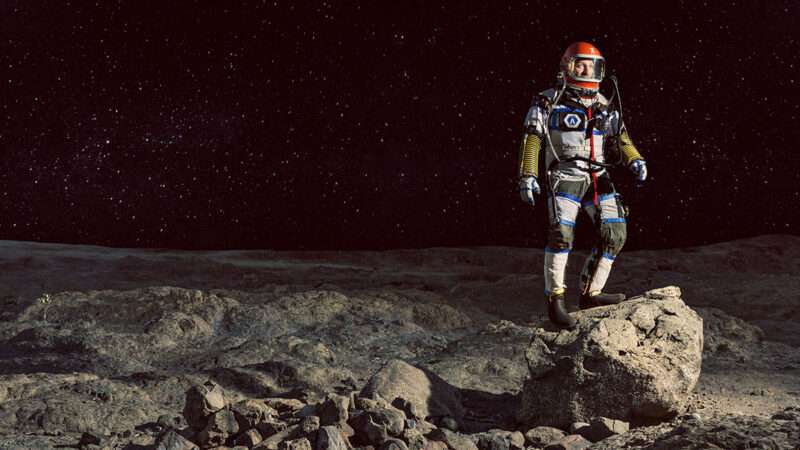
In 2010, Portland State University anthropologist Cameron Smith taught himself how to sew. He was not developing his own line of socks or winter hats. He was making a spacesuit.
Smith's creation, made from a few thousands dollars' worth of common items such as flameproof textiles, fasteners, chemical painting gloves, and pie tins, got him safely to 25,000 feet in a hot air balloon. His ultimate goal is the Armstrong limit, 63,000 feet from Earth's surface, where atmospheric pressure is so low that the boiling point for water is the temperature of the human body.
Although that's not quite the surface of the moon, Smith's project embodies characteristics that are essential for space exploration. NASA could use more people like him.
In June 2022, NASA chose Axiom Space and Collins Aerospace to compete for the new moonwalker project. By fostering competition and encouraging companies to collaborate, NASA is hoping to drive down the cost of spacesuits.
Thus far, commissioning new extravehicular mobility units (EMUs) has been a sunk-cost nightmare. Since 2007, NASA has spent more than $420 million on the development of spacesuits, but it is still at least two years from testing what Axiom and Collins come up with. By the time those spacesuits are flight-ready, NASA's Office of the Inspector General estimates, the agency will have spent $1 billion developing EMUs that it will then have to lease.
The suits currently in use were introduced in 1981. While they went through some modifications in the early 1990s, they still heavily rely on 1970s technology. And in recent years they've shown dangerous wear and tear—most recently in March, when astronaut Matthias Maurer noticed a water leak in his suit during a spacewalk.
The EMUs worn by the Apollo 11 crew, by contrast, were made in just six weeks by the International Latex Corporation (ILC), then best known for its bra manufacturing division, Playtex. ILC won the lucrative government contract over well-established defense contractors like Hamilton Standard and Litton Industries. Those iconic EMUs were handsewn, and each cost about $100,000 ($800,000 in current dollars).
While walking on the moon is more complicated than flying in a hot air balloon, Smith's ingenuity suggests what private innovators can accomplish on a limited budget. NASA's new spacesuit contracts should prioritize that kind of bang for the buck.
The post NASA's Costly, Delayed Mission To Update Its Spacesuits appeared first on Reason.com.







